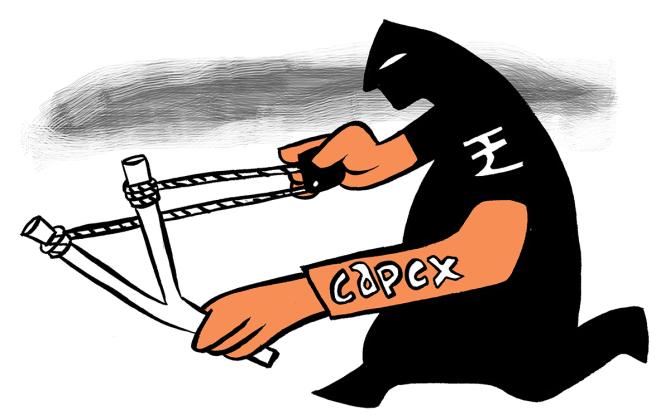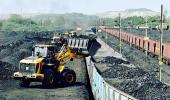The stellar rise in corporate earnings in financial year 2021-22 (FY21) and FY22 did not result in a corresponding boom in capital expenditure (capex), with listed companies’ investment in fixed assets rising just 2.3 per cent year-on-year (YoY) in FY22, growing at the slowest pace in the last six years.

In comparison, the firms’ combined net profit jumped 63.5 per cent YoY in FY22, while net sales increased 31.1 per cent — the fastest pace in over a decade.
The 955 non-financial companies in Business Standard’s sample reported combined net profit of Rs 7.18 trillion in FY22, compared with Rs 4.39 trillion in FY21 and Rs 2.59 trillion in FY20.
The companies’ combined net sales jumped to Rs 87 trillion in FY22 from Rs 66.43 trillion in FY21 and Rs 69.9 trillion in FY20.
In all, the annual corporate earnings rose 66 per cent from the pre-Covid level of Rs 4.32 trillion in FY19.
However, in the same period, India Inc’s fixed assets grew around 22 per cent from around Rs 41 trillion at the end of FY19 to Rs 49.8 trillion at the end of FY22.
These numbers suggest that rather than funding capex, companies used the jump in their earnings and cash flows to build cash reserves and pay higher dividends to shareholders.
The companies’ cash and bank balance rose 13.4 per cent YoY to a record Rs 7.54 trillion at the end of FY22, while their dividend pay-out to shareholders increased 18.8 per cent YoY to Rs 3.05 trillion last fiscal. Dividend includes cash outlay for share buybacks.
The companies in the sample returned Rs 33,254 crore to their shareholders in FY22 by way of share buybacks, down 3 per cent YoY from Rs 34,271 crore in FY21.
The overall dividend pay-out was, however, 22.2 per cent higher YoY at Rs 2.71 trillion in FY22 from Rs 2.22 trillion a year ago.
This analysis is based on the annual profit and loss and balance sheets of a common sample of 955 companies that are part of the BSE500, BSE MidCap and BSE SmallCap indices.
The sample excludes companies in the banking, financial services, and insurance (BFSI) space.
It also excludes the listed subsidiaries of listed holding and operating companies to avoid double counting.
All the numbers are on priority consolidated basis and as reported by the companies.
Analysts attribute the divergence between earnings growth and corporate capex to the “peculiar nature” of growth last fiscal.
“Most of the growth in corporate revenue and profits in FY22 came from higher prices rather than volumes, and the growth was led by commodity producers such as mining, metals and oil and gas companies.
"This means that the capacity utilisation in the manufacturing sector remains below the threshold level,” says Dhananjay Sinha, managing director and chief strategist at JM Financial.
According to him, many companies also utilised higher earnings and cash flows to prepay debt and deleveraged their balance sheet rather than risk their capital on new projects or capacity expansion.
“There is still a high level of uncertainty in the economy with rising inflation and commodity prices.
"The volatility in revenue growth is now 5 times the average annual growth, which makes it tough for companies to project future growth.
"This makes companies reluctant to invest in new projects,” adds Sinha.
Others highlight the relatively faster growth in the services sector.
“Most of the incremental growth in the economy in the last two years came from the services sector, especially IT services, which doesn’t require too much investment in fixed assets or capex,” says Shailendra Kumar, chief investment officer of Narnolia Securities.
Analysts expect the capex trend to change over the next two years.
“We believe India is on the verge of a big recovery in the capex cycle, led by large public spending and subsidies such as the production-linked incentive (PLI) scheme,” Amnish Aggarwal and Anushka Chhajed of Prabhudas Lilladher wrote in a recent report.
Economists, however, question the government’s ability to fund public capex, given the additional expenditure on food, fertilisers, and cooking gas subsidies and the cut in excise duty on petrol and diesel, among other measures taken in light of the surge in inflation.
“If global commodity prices remain higher for longer, there is a risk of reallocation of limited fiscal space towards the provision of a social safety net to low-income households, leading to some capex cuts in H2FY23,” says Tanvee Gupta Jain, economist at UBS India Securities.











